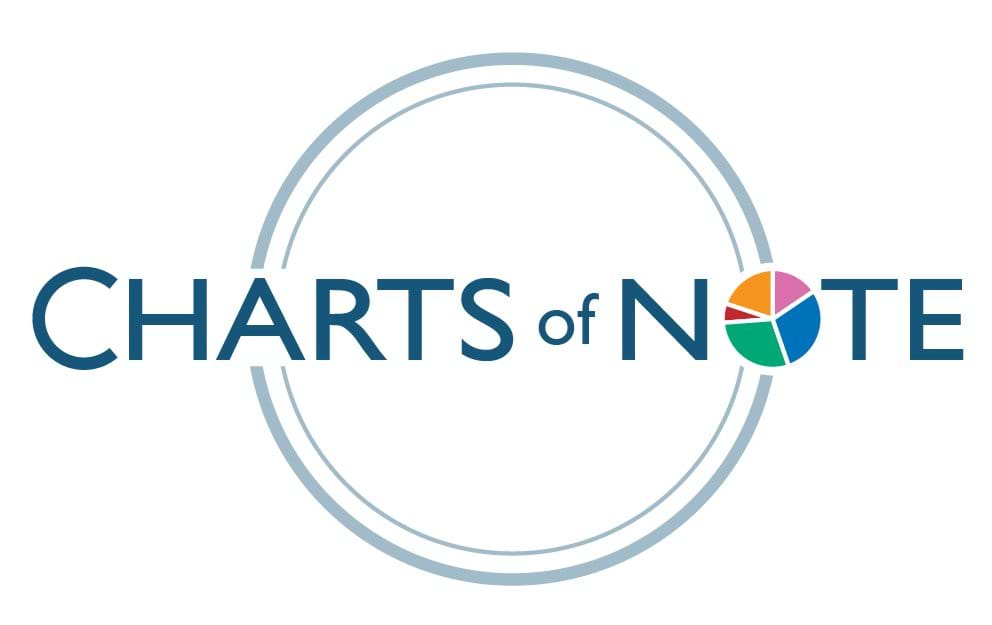ERS Charts of Note
Subscribe to get highlights from our current and past research, Monday through Friday, or see our privacy policy.
Get the latest charts via email, or on our mobile app for  and
and 

Monday, March 25, 2024
The USDA, Farm Service Agency administers the Livestock Forage Disaster Program (LFP), which provides payments to livestock producers affected by drought. From 2008 to 2022, the program distributed more than $12 billion (in 2022 dollars) in total to livestock producers throughout the United States. Annual LFP payments peaked in 2012 at more than $3 billion (in 2022 dollars) when severe, widespread drought conditions were prevalent throughout much of the central United States, where much of the Nation’s livestock production is concentrated. In general, years with widespread drought (such as in 2012, 2013, and 2022) are associated with larger total annual LFP payments. LFP eligibility is based on drought severity as reported by the U.S. Drought Monitor. If drought conditions become more severe and common in the future because of climate change, LFP payments may increase, with potential impact on the Federal Government’s budget. For more about the LFP and the potential impact of LFP payments on the Federal budget, see the USDA, Economic Research Service report The Stocking Impact and Financial-Climate Risk of the Livestock Forage Disaster Program, published in January 2024.

Monday, March 11, 2024
Beef cattle operations that rely on precipitation to grow forage to feed their herds are particularly vulnerable to drought. When drought conditions diminish forage production and availability, beef cattle producers often must buy supplemental feed and forage or reduce their herd size. Periods of more intense drought are associated with decreases in the U.S. beef cattle herd size, such as when the national beef cattle herd shrank about 1 to 2 percent a year during drought between 2011 and 2015. This chart also shows that cattle numbers grew in the less intense drought years of 2015 to 2018. Other factors outside of drought conditions also influence changes in the beef cattle herd size, including feed and forage prices, extreme precipitation events, supply chain issues, and the natural life cycles of livestock (i.e., the cattle cycle). To support livestock producers negatively impacted by drought conditions, the USDA administers a range of programs such as the USDA, Farm Service Agency’s Livestock Forage Disaster Program (LFP), which provides payments to livestock producers whose forage production is diminished by drought. LFP eligibility is determined by drought conditions reported by the U.S. Drought Monitor. Many livestock species, ranging from beef cattle to reindeer, are eligible for LFP payments. LFP payment rates are species specific and designed to cover about 60 percent of monthly feed and forage costs. For more about the U.S. beef cattle herd, the LFP, and the potential impact of LFP payments on the Federal budget, see the USDA, Economic Research Service report The Stocking Impact and Financial-Climate Risk of the Livestock Forage Disaster Program, published in January 2024.

Wednesday, January 31, 2024
Drought imposes significant costs on the U.S. agricultural sector, particularly for livestock producers who rely on precipitation to grow forage. USDA’s Farm Service Agency’s (FSA) provides payments to livestock producers whose pastures and rangeland are impacted by drought through the Livestock Forage Disaster Program (LFP). The LFP was established by the 2008 Farm Bill and uses eligibility criteria based on county-level drought conditions reported by the U.S. Drought Monitor. FSA annually sets species-specific per head LFP payment rates designed to cover about 60 percent of monthly feed/forage costs for livestock. Livestock species eligible for LFP payments include traditional livestock, such as beef and dairy cattle, as well as more exotic varieties, such as reindeer and ostriches. Between 2008 and 2022, the program disbursed more than $12 billion (in 2022 dollars) of payments to livestock producers. Counties with the largest aggregate LFP payments per 1,000 head of livestock are concentrated primarily in the Western, Southern, and Central United States, where drought conditions are generally more severe and common. About 20 percent of counties in the continental United States received no LFP payments between 2008 and 2022. These counties are primarily located in urban regions and the relatively more humid Eastern United States. This chart was drawn from the USDA, Economic Research Service report The Stocking Impact and Financial-Climate Risk of the Livestock Forage Disaster Program, published January 2024.

Friday, March 16, 2012
In the first quarter of 2012, commercial production of lamb and mutton are forecast at 38 million pounds, 5 percent higher than the same period in 2011. Although Easter and Passover will be in early April, most of the lamb production in anticipation of these holidays will take place in March. Typically, lamb demand exhibits some seasonality and is highest ahead of these religious holidays. Commercial lamb and mutton production in March has been consistently higher than in any other month of the year. As a result, despite declining annual lamb and mutton production and relatively low production in January and February, increases are expected this month. This chart is from the March 2012 Livestock, Dairy, and Poultry Outlook, LDP-M-213.

Friday, October 14, 2011
Though global sheep numbers have remained fairly stable since 1960, with inventories remaining close to 1.1 billion throughout the period, sheep numbers in some of the major sheep-consuming and export-oriented producing countries declined steadily. Australia and New Zealand, the largest exporters of lamb and mutton globally, have seen drastic declines, with inventories falling by 17 and 18 percent, respectively, in the last 5 years. The European Union (EU) and the United States-major consumers of high-value lamb-have seen declines in their sheep numbers as well. Much of the decline in these countries' sheep inventories stems from an underlying long-run decline in demand for raw wool and low returns for wool relative to returns from prime lamb production and other farm enterprises. This chart comes from Livestock, Dairy, and Poultry Outlook, LDP-M-207, September 16, 2011.


